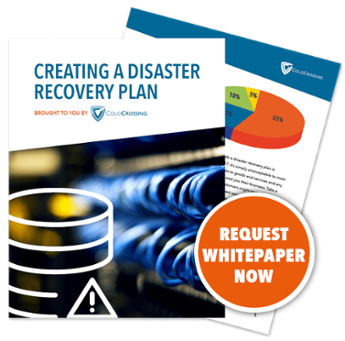When it comes to backing up data, the conscientious and organized among us are a rare breed. Even in present times, when the value and significance of organizational data backup strategies is acknowledged and indisputable, many fail to take the appropriate measures or implement a functional plan for the information they hold dear.
Such predicaments, while unfortunate, are very understandable — with the voluminous amounts of data that are being created and kept, it does not take long before things go out of control. Size truly does not matter in this case — even the smallest of businesses, run by nothing more than a tight-knit team, can find themselves in a situation where the amount information they store is, in a word, overwhelming. If we add the very serious risk of losing all that information due to unforeseen circumstances and lack of a backup strategy, the losses can very well run an organization into the ground. And they have — statistics show that, on average, 60% of companies that lose their data and do not have a backup plan in place cease operations within 6 months of the event (National Archives & Records Administration in Washington).
Request your free data security and backup audit today!
It is no surprise, then, that organizational data backup strategies have been a popular topic ever since their inception. In this article, we will talk about one of the most effective methods to store your data and make sure it endures in the face of disaster — the 3-2-1 backup model.
Specifics of the 3-2-1 Backup Model
In layman terms, the 3-2-1 backup model is the idea of having, at the very least, three copies of your data. Two of these are located on-site, while one is available off-site. For example, you have all your important files on your computer — that is the original source. Then, these files are copied and at your disposal on an external drive, which is your other local medium. The third location of your files is an online backup, updated constantly by scanning your device and uploading whatever is important to you.
The message the 3-2-1 backup model communicates is the following: keeping your data backed up on just an external drive, while never a bad idea, leaves your strategy with a flagrant weakness. This is where off-site storage plays a major role. Since it is in a remote location, online backup is not susceptible to hazards that may affect your computer and/or external drive. Running a combination of the latter two leaves something to be desired, and utilizing a third medium removed from potential dangers eliminates a substantial amount of risk.

Take the following scenario for example: a fire, flood or power surge ends up inflicting irreparable damage to your computer. Your external drive is most likely in the same room or in close proximity, so it takes the hit as well. In this case, unless you have a third, independent backup location, your best bet is to take the external drive for repairs which may easily cost you a four-digit figure. That is without mentioning the low odds of complete recovery. Whether it is your individual files or crucial business data, you can see how simply having a backup strategy may not be enough — you have to make sure you are fully covered, too.
Is 3-2-1 the Ultimate Backup Strategy?
There is no end-all-be-all as far as organizational backup strategies are concerned. Depending on your situation and needs, a simple backup to an external drive may be more than enough for you. However, the 3-2-1 model is as simple as it gets, and on top of that it is very easy to implement. It is a great starting strategy for businesses as well as individuals, due to the excellent redundancy it offers without requiring you to be a tech guru. 3-2-1 as a strategy is accessible, secure and you will not have to go out of your way to make it work. It is very much a hands-off approach — the only aspect you need to remember is updating your external drive on a regular basis, and even that may not be necessary as newer devices have in-built software for that.
Whatever strategy you choose to implement, the most valuable pieces you can take from this are knowledge and awareness. We believe it is nobody’s place to argue why a great deal of people forego backups and leave themselves continually exposed to such easily managed risks — instead, change should be encouraged by spreading the word. Basic data backup strategies are low-cost and low-maintenance, and they are instrumental in keeping your data available to you at all times.
Do Not Hesitate to Ask
If you want to lay the foundations of your organizational data backup strategy, but you have more questions than answers, look for the information you need. Sources are abundant and exhaustive — most of all, there are many who would like to help you find the best solution for yourself or your business. At ColoCrossing, we take great pleasure in offering assistance in backup-related matters across 8 locations nationwide. If you need help with your backup plan, we’re happy to help.

